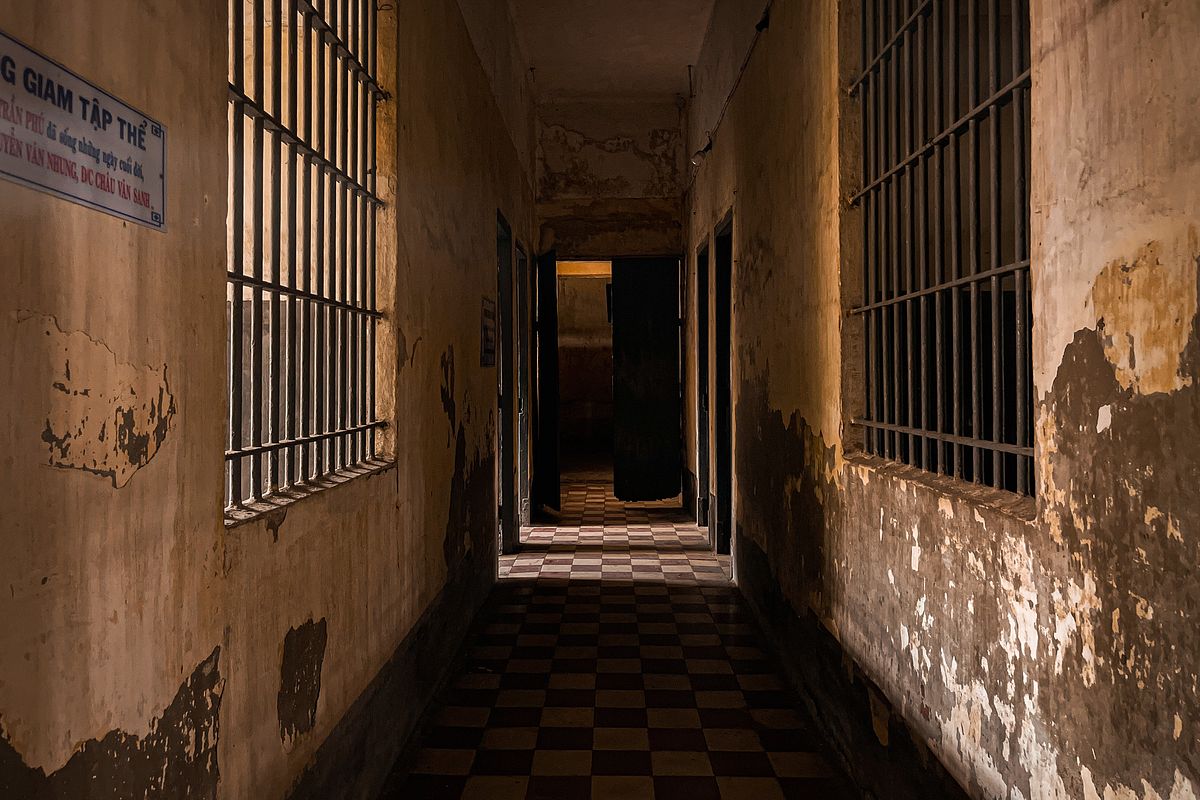In a secluded corner of Saigon’s Bệnh viện Nhiệt đới, or Hospital for Tropical Diseases, a prison continues its century-long existence hidden from public memory and discourse.
It is uncommon knowledge to most people that the present-day Hospital for Tropical Disease (formerly Nhà Thương Chợ Quán) was once home to a 150-year-old detention camp where revolutionaries such as Trần Phú, Hà Huy Tập, and Nguyễn Văn Trỗi were held captive. According to historical records, the cells were originally built by French colonialists in 1875 as a specialized ward to treat psychiatric patients at Chợ Quán Hospital.
The institution later took on a darker purpose as the regime turned it into a base to confine political prisoners that were being treated at the ward to extract intel on anti-colonial efforts. The encampment went on to be responsible for detaining prisoners of war throughout Vietnam’s decades of conflict with French and American forces.


Chợ Quán Hospital was established in 1982 with donations and support from the local Vietnamese community. Long before the hospital’s founding, its plot was occupied by a French-run first-aid clinic. In 1864, the clinic operation was handed over to the succeeding government. A specialized wing was created to isolate and treat its psychiatric patients.

Despite the changes in the political and cultural landscapes that surround it, the structure retains its colonially inspired architecture. The design of the prison is in a cowbell shape. The front entrance directly overlooks the women’s cell, while the men's cell is on its right. The pitched roofs are covered in double lap tiles supported by fixed iron frames and the floor still has its original terracotta tiles. Under French rule, bunks used to shackle inmates were made of wood, but under American control, they were replaced by cement blocks that were common in the Phú Quốc and Côn Đảo prisons.

A communal cell with double lap tiling where male inmates were held.


Though seemingly cramped, the women’s cell was actually the space that got the most sunlight thanks to the large windows that run along the wall.
The prison’s long and narrow corridors sent a chill down my spine, as the deeper I ventured into these halls, the colder and gloomier the atmosphere became, even though it was midday. Taproots from trees outside were seeping in through cracks in the wall, and in a few cells, shackles remained where they had been for decades. The innermost chambers were impenetrable by sunlight, further adding an air of mystery to the building.
Apart from the regular cells, the French also built solitary confinement quarters to quarantine patients that had infectious diseases that could spread to the rest of the inmates.

The inside of a cell for patients with infectious diseases.


A communal restroom that prisoners shared.


The stairs in these dimly lit rooms lead to buckets placed underneath that were used as toilet bowls.




Iron shackles are kept intact for display
One of the most historically significant parts of the structure is the cell that held Trần Phú, the first General Secretary of the Indochinese Communist Party, who was still in captivity when he died of tuberculosis on September 6, 1931. His last words to fellow comrades were:
Trần Phú’s portrait and headstone, as well as information plaques detailing his capture and death, are still shown at the cell where he passed away. Here, flowers and wreaths are sometimes placed by visitors to remind current and future generations that this was the final resting place of a nation’s leader and patriot.



On special occasions such as Trần Phú's death anniversary or public holidays, bouquets are often placed by his headstone to commemorate his sacrifice.
In stark contrast to the bleakness that the prison bears within, a lush garden surrounding it has sprouted up to provide shade and comfort to patients receiving treatment at the Hospital for Tropical Diseases, who are most likely unaware of the fact that every brick, tile, and frame around them bore witness to a painful scar in the nation's history.





Documents about Trần Phú's life and revolutionary contributions are preserved and exhibited for visitors.
Readers keen on exploring more of the prison in person may easily do so since the site is accessible to the public and located to the right of the hospital's dining hall, which is only 100 meters away from the main gate. But as the prison is under the supervision of the District 5 Cultural Center, be sure to contact them for permission before planning a day trip!
Visit ttvhq5.com.vn or call 028 3855 6161 to learn more about the site or to schedule a visit.















